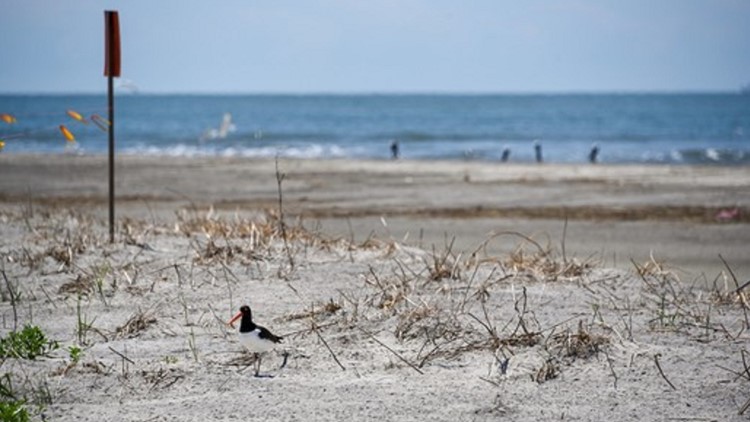COLUMBIA, S.C. — As visitors begin flocking to the state's sandy beaches, the South Carolina Department of Natural Resources (SCDNR) wants beachgoers to be aware they may be sharing space in a nursery area.
Spring is the nesting season for a wide variety of coastal birds and sea turtles along the South Carolina coast.
Recently, SCDNR biologist Janet Thibault found the first documented shorebird nest of the season when she found a nest belonging to an American oystercatcher at Crab Bank Seabird Sanctuary in Charleston Harbor. The nest contained two speckled eggs laying in a shallow nest on the ground.
There are about a dozen different species of shorebird and seabird species that nest on the state's islands and beaches and authorities want to remind the public these birds need safe, undisturbed spaces to nest and raise their chicks. SCDNR biologists use posts and signage to mark off nesting habitats during the season that runs roughly between March 15 to October 15 of every year.
Some islands along the coast -- including Crab Bank, Bird Key-Stono, and some parts of Deveaux Bank -- have been designated Seabird Sanctuaries and host large colonies of brown pelicans, black skimmers, royal terns, Wilson's plovers, and others. These sanctuaries are off-limits to all landings during nesting season. While shorebirds are solitary nesters, seabirds nest in colonies that can number in the hundreds of thousands.
SCDNR has these tips for beachgoers during nesting season:
- Be aware of local regulations before heading to the beach
- Dogs may not be allowed at some public beaches. Where they are allowed, keep dogs on a short leash. Coastal birds perceive all dogs as predators; even the presence of well-behaved pups can stress nesting parents and cause them to flee.
- Avoid roped-off nesting areas. When nesting parents are forced to fly off the nest, they leave eggs and chicks vulnerable to the heat of summer and other predators.
- Leave only footprints. Take personal items, trash, and food scraps that you may have brought with you so as not to attract predators such as raccoons and laughing gulls.
- Walk around birds, not through them. Walk in the wet sand and around birds that may be feeding by the shoreline.
Other SCDNR-managed barrier islands have regulations in place to protect not only beach-nesting birds but also other wildlife such as sea turtles. Regulations for these properties are available online here.



